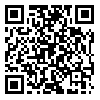Volume 24, Issue 3 (7-2024)
ijdld 2024, 24(3): 179-188 |
Back to browse issues page
Download citation:
BibTeX | RIS | EndNote | Medlars | ProCite | Reference Manager | RefWorks
Send citation to:



BibTeX | RIS | EndNote | Medlars | ProCite | Reference Manager | RefWorks
Send citation to:
Moradi F, Aghaei Bahmanbeglou N, Shadmehri S, Asgharpour H. The Effect of High-Intensity Interval Training on the Intracellular Levels of Autophagy Proteins in the Left Ventricular Tissue of Rats with Type 1 Diabetes. ijdld 2024; 24 (3) :179-188
URL: http://ijdld.tums.ac.ir/article-1-6297-en.html
URL: http://ijdld.tums.ac.ir/article-1-6297-en.html
1- Department of Physical Education and Sport Sciences, Aliabad Katoul Branch, Islamic Azad University, Aliabad Katoul, Iran
2- Department of Physical Education and Sport Sciences, Aliabad Katoul Branch, Islamic Azad University, Aliabad Katoul, Iran ,nedaghaei@gmail.com
3- Department of Physical Education and Sport Science, Yadegar-e-Imam Khomeini (RAH) Shahre-rey Branch, Islamic Azad University, Tehran, Iran
2- Department of Physical Education and Sport Sciences, Aliabad Katoul Branch, Islamic Azad University, Aliabad Katoul, Iran ,
3- Department of Physical Education and Sport Science, Yadegar-e-Imam Khomeini (RAH) Shahre-rey Branch, Islamic Azad University, Tehran, Iran
Abstract: (543 Views)
Background: Diabetes can cause serious cardiovascular complications by disrupting the autophagy pathway. Therefore, this study aimed to investigate the effect of high-intensity interval training (HIIT) on the intracellular levels of autophagy proteins in the left ventricular tissue of rats with type 1 diabetes.
Methods: In this experimental study, 18 2-month-old male Sprague-Dawley rats with an average weight of 300±20 grams were selected. Twelve rats had type 1 diabetes after intraperitoneal injection of STZ (with a dose of 50 mg/kg of body weight) solution. Rats were randomly divided into two groups: diabetic training and diabetic control (each group, six heads). A healthy control group (six heads) was also considered. The training group underwent HIIT four days a week for six weeks. GraphPad Prism version 9.5 software and one-way ANOVA, and Tukey's post hoc tests were used to analyze the data. The significance level was considered P≤ 0.05.
Results: ULK1 and FIP200 levels showed a significant increase in the left ventricle after 6 weeks of HIIT training compared to the healthy control group and the diabetic control group (P= 0.0001).
Conclusion: Considering the increase in ULK1 and FIP200 proteins, it can be concluded that HIIT training can activate the autophagy pathway; Therefore, in prescribing this type of exercise for diabetic subjects, the intensity and duration of the exercise should be considered.
Methods: In this experimental study, 18 2-month-old male Sprague-Dawley rats with an average weight of 300±20 grams were selected. Twelve rats had type 1 diabetes after intraperitoneal injection of STZ (with a dose of 50 mg/kg of body weight) solution. Rats were randomly divided into two groups: diabetic training and diabetic control (each group, six heads). A healthy control group (six heads) was also considered. The training group underwent HIIT four days a week for six weeks. GraphPad Prism version 9.5 software and one-way ANOVA, and Tukey's post hoc tests were used to analyze the data. The significance level was considered P≤ 0.05.
Results: ULK1 and FIP200 levels showed a significant increase in the left ventricle after 6 weeks of HIIT training compared to the healthy control group and the diabetic control group (P= 0.0001).
Conclusion: Considering the increase in ULK1 and FIP200 proteins, it can be concluded that HIIT training can activate the autophagy pathway; Therefore, in prescribing this type of exercise for diabetic subjects, the intensity and duration of the exercise should be considered.
Keywords: Type 1 Diabetes, High-Intensity Interval Training, Left Ventricle, Unc-51 Like Autophagy Activating Kinase-1, FAK Family-Interacting Protein of 200 kDa
Type of Study: Research |
Subject:
Special
Received: 2023/10/9 | Accepted: 2024/01/10 | Published: 2024/07/31
Received: 2023/10/9 | Accepted: 2024/01/10 | Published: 2024/07/31
Send email to the article author
| Rights and permissions | |
 |
This work is licensed under a Creative Commons Attribution-NonCommercial 4.0 International License. |






